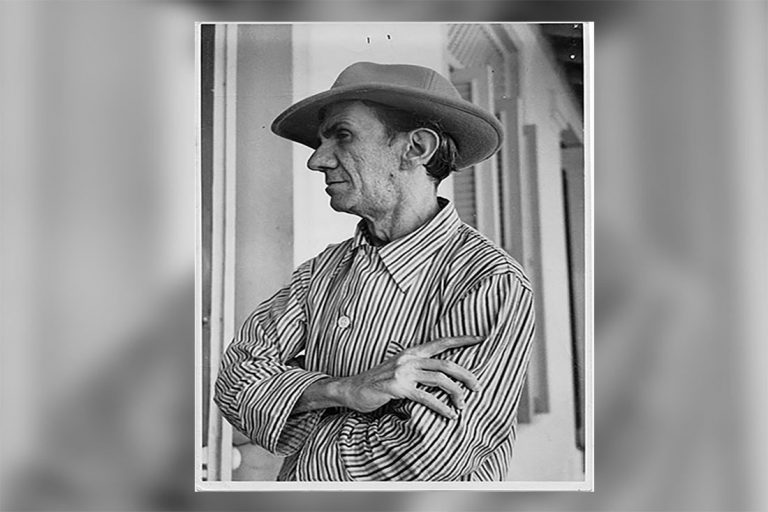By: Claudia Sánchez (Journalism student)
Camagüey boasts centuries full of culture, mysteries and incredible artists who left sighs in the alleys of Camagüey’s identity. It is a city that, due to the evolution of Spanish Catholicism, welcomes the convergence of centuries-old temples, witnesses of the passing of the years, of the same sense of belonging and roots of the people from Camagüey.
Among the great makers of provincial culture is Fidelio Ponce de León, a painter of the national visual avant-garde of the 1920s, the creator of a very personal, transgressive and delusional work, a kind of self-discovery.
His work
He devoted himself to painting Christs, saints, eighteenth-century ladies, all with an intelligent use of white and ocher. It seems to contradict the rectitude of the avant-garde itself and its artistic expression.
He entered the artistic avant-garde from the side, beginning his studies at the San Alejandro National Academy of Fine Arts in 1915, from there he rescued the need to create a new art in opposition to retrograde teaching.
Due to the authentic way of art and existence of him, he dropped out of high school and started a life in which some excesses would not be lacking, he always seemed to refute conscience.
In his distinctive inquiry, he does not accept the clothing of that time in which he outlines himself. Within the Havana controversies, both artistic and political, that spread throughout the country, Ponce struggles to preserve an identity that is very much his own, which he refuses to share shocks.
Everything enters his head, is transformed, disfigured to create a mythical, suggestive and spiritualized universe. The ocher of his paintings, the roughness of the pigment, the grotesque and the sick, a certain darkness in the light and the reiteration of motifs of Spanish popularity, are attributions that refer us to the drama and the psychological.
Its essence
He is undoubtedly the painter of dressed and disguised bodies, he knows that his triumph lies in the dissimulation of the fabrics, the reiterated and subtle claim to the symbolic power of the suit allows him to express himself forcefully and reveal the keys to his lyricism. In the 1930s and 1940s he painted characters dressed as Benedictines, monks, pious. It was a fearless way of showing his rebelliousness and his non-conformist spirit. These gestures free him from the vulgar because he brings these ancient figures to the canvas with freedom and rapture.
His reiterated interest in religion leads him to the exception of Cuban painting, as well as the conceptual visual richness of his proposals. With Ponce de León, the field of Cuban painting explores for the first time the emancipation of feelings and the religious worldview.
Between 1935-1940 he exhibits a strange and suffering world, of whites and greys. It is the period to which Los Rostros de Cristo (1939) corresponds, the year in which he was diagnosed with tuberculosis, hence the nuances of this work. Transparent to his ideas, the life of this artist contained a certain ambiguity between an apparent atheism and the faith of his paintings.
El Cristo is a work that reflects a lascivious effect, pushes and makes us escape from an intimate reality that becomes inspiration, a plastic dissertation that defines the sacred divinity, the fear in its ocher curves and the imposing reverence before such a character.
The impasto bitterly achieved by Fidelio Ponce in this painting, twists human thought and means a question mark for appreciation, the maximum point of accusation is found in the dark tone of the eyes, which intimidate and disorient. The background is a series of superimposed brushstrokes that do not differ in tones and seem to come and go towards the same order of feelings.
Translated by: Aileen Álvarez García






